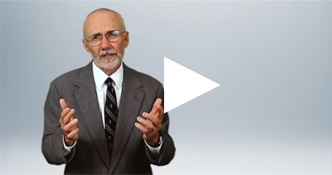How the Board of Directors Can Help Prevent Nonprofit Executive Director Burnout
In many ways, there is no better job than being a nonprofit Executive Director. The work is exciting, fun, and rewarding. Best of all, you get to work with great people who share a passion for making the world a better place.
But even in the best-case scenario – a solid board of directors, ample funding, and great staff – the Executive Director lives with daily stress. The job can feel lonely. Worries about funding, finances and friction with the board of directors can cause a sense of dread – like carrying a horcrux around your neck.
Harry Potter fans will understand my horcrux analogy. In the final Harry Potter book (Harry Potter and the Deathly Hallows), Harry and his friends Ron and Hermione are on a quest to destroy horcruxes – objects that contain parts of Voldemort’s soul. For the first half of the book, the three friends take turns carrying one of the horcruxes because they have not yet figured out how to destroy it. They take turns because the horcrux has a troubling effect on them – it puts the carrier in a really bad mood. When carrying the horcrux, the wearer carries a sense of dread and cynicism. By taking turns, the friends are able share the burden.
The role of Executive Director does not include carrying around part of an evil wizard’s soul, but there is definitely stress involved. Fortunately, there are concrete steps that a board of directors can take to share the Executive Director’s burden, limit turnover, and increase the organization’s impact. It’s important to take these steps now more than ever.
Prior to the pandemic, the average tenure of a nonprofit Executive Director was about six years. Over the last two years, nonprofits have faced a tremendous increase in demand for services coupled with sometimes impossible decisions to make. These stressors lead to compassion fatigue and decision fatigue – and now nonprofit Executive Directors are burning out at a faster rate than ever before.
What can a nonprofit board of directors do to extend the tenure of the organization’s Executive Director? I have five suggestions:
1. Appoint a trusted board member to be the Executive Director’s informal confidant.
Sometimes the Executive Director just needs to vent. Other times he/she needs help in steering board members away from going down the wrong road. The confidant is someone who the Executive Director can talk to before and after the board meeting if necessary in order to maintain a strong board/E.D. relationship.
2. Take ownership of financials.
A strong and transparent relationship between the Executive Director and the Finance Committee is crucial. While all board members should read the financial statements prior to each board meeting, I recommend that the Finance Committee Chair (Board Treasurer) present the financials during the meeting. This underscores the idea that the financial well-being of the organization is the board’s responsibility.
3. Share the burden of fundraising.
There are many ways that a board can share the fundraising burden, and it is important to write them down and take accountability. A good fundraising plan explicitly states tasks for individual board members. The roles can be small (introduce the Executive Director to at least 3 new potential donors), or large (Chair the gala planning committee). By making fundraising the job of the board, the Executive Director will not feel quite as lonely, and will be more likely to share concerns about funding challenges in the future.
4. Get to know your funders.
There is a structural power dynamic between the funder and the Executive Director that can be stressful. As a board member, you can strengthen the connection between your organization and the funder by developing your own relationship with the appropriate contacts.
5. Embrace the board packet.
Board meetings are much more efficient when important information such as program updates and financial reports are provided in writing, at least one week in advance, in the board packet. Board members should take the time to read this information ahead of time and bring any concerns to the Executive Director privately in advance of the meeting. This way, the Executive Director won’t feel blindsided. Board meetings will be much more productive and less stressful for the Executive Director.
Retaining talented leaders should be a priority for every nonprofit organization. Following the above steps will help Executive Directors feel supported – and yet we recognize there are times when it may be in their best interests to take a break, retire early, or let someone new take the helm with fresh ideas and energy. Of course, if the board is generally unhappy with the Executive Director’s performance and needs to make a change, that is another matter altogether. If your nonprofit is facing a vacancy in its top leadership position, regardless of the situation, hiring an excellent search firm like The Moran Company can ease the burden (or horcrux) of finding top talent for this important role.
By Mike English
Senior Search Consultant
The Moran Company
“We Find Great Nonprofit Executives”
Posted in Executive Search Articles
Subscribe
Join more than 10,000 nonprofit professionals, community leaders and board members who receive e-mail updates from The Moran Company.






